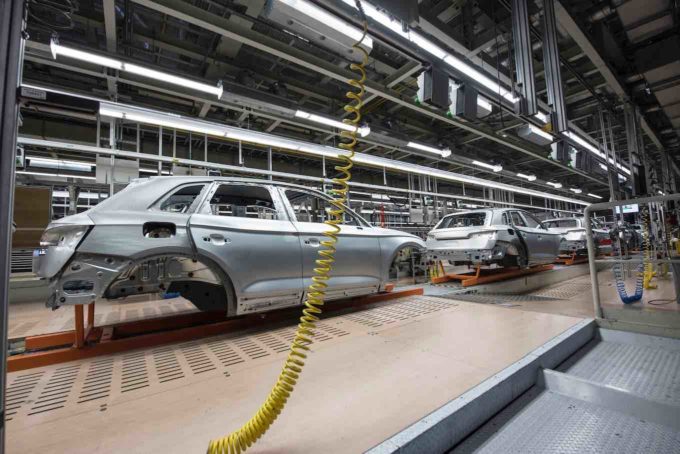
The introduction of new technologies can change market conditions and influence competition. Market equilibrium adjusts according to the overall effects of newly introduced technologies. The introduction of the new technology in only a single competing firm affects the firm’s performance compared to other companies in the market, at least in the short term. Nonetheless, other firms eventually adjust and catch up and the market accommodates the new factors, including the new technology.
In an ideal perfectly competitive market, there are many firms operating in the industry, such that not one of these firms has significant influence or power to directly cause a major shift in market conditions. Also, a perfectly competitive market involves many customers, such that not one of these customers has significant power or influence to directly cause a major change in the conditions of the market. Still, changes in the technological resources available to one or more firms can significantly impact the entire market.
In a perfectly competitive market, a new technology that reduces marginal production cost would enable and encourage firms to increase production in the short run. However, as more and more firms adopt the technology in the long run, the competitive benefit of using the new technology would become canceled out. Therefore, the effect of such new technology that reduces marginal production costs would be an increase in revenues and economic benefit for the individual firm and the industry in the short run, but a gradual reduction in relative competitive advantages in the long run, until a new equilibrium is reached.
Impact of New Technology on a Single Firm
Considering market demand and supply, a new technology that reduces marginal cost of production in a single company could boost that company’s revenues and profits. Assuming that price and demand are constant, and that all firms in the market have the same operating conditions, the new technology that reduces marginal cost of production creates an increase in the incentive of the single firm to produce more. For example, higher productivity based on the technology could prompt the company to produce more with the expectation of selling more and earning more.
A high marginal production cost discourages firms from producing more because of an increase in production would not necessarily lead to a commensurate increase in profits. However, the new technology that reduces marginal production cost would encourage the company to produce more. Thus, in the short term, the supply of the products of the individual firm would increase.
An increase in the supply of the products leads to a greater market presence and possibly greater sales for the single company. In this regard, the short-run effect of the new technology would be a potentially higher turnover of products for the individual firm. This condition equates to an increase in the short-run business performance of the firm.
Market and Industry Adjustments to New Technology
The new technology introduced to the industry could lead to a short-run increase in economic benefit as the costs of production are reduced and as firms gradually adopt the new technology. These changes correspond to a shift of the supply curve, as firms could initially increase production due to lower costs. Business organizations’ objective in adopting the new technology would be to compete more effectively, especially against firms already using the technology.
In the long run, the market continues to adjust and reaches a situation where all or almost all of the firms would have adopted the technology. Assuming constant demand, the market would experience excess in supply immediately after firms adopt the technology. This excess leads to higher losses and associated costs for the entire industry. Firms would eventually adjust to match supply with demand.
Firms in the market would eventually operate at just about the same level of competitiveness relative to each other, as the market reaches a new equilibrium. In this new market equilibrium, despite constant demand, firms would experience positive net benefit because of lower production costs based on the technology. Therefore, positive net economic benefit is achieved.
Sources
- Beshkar, M. & Lashkaripour, A. (2017). Interdependence of Trade Policies in General Equilibrium. World Trade Organization.
- Colander, D. C. (2004). Economics, 7th ed. IL: McGraw-Hill.
- Qian, L., & Wang, I. K. (2017). Competition and innovation: The tango of the market and technology in the competitive landscape. Managerial and Decision Economics, 38(8), 1237-1247.
- Urrutia, B. (2000). Internet and Its Effect on Competition. European Union.